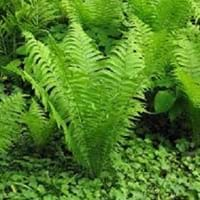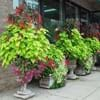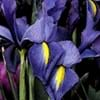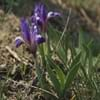Life Span
Perennial
Perennial
Type
Bulb or Corm or Tuber
Fern
Origin
Mediterranean, Western Asia
North America, Europe, Eastern Asia
Types
Not Available
M. struthiopteris var. struthiopteris
M. struthiopteris var. pensylvanica
Number of Varieties
Not Available
Habitat
Mediterranean region
Forest margins, Roadsides, Terrestrial
USDA Hardiness Zone
4-9
2-8
Sunset Zone
21,22
A1, A2, A3, 1a, 1b, 2a, 2b, 3a, 3b, 4, 5, 6, 7, 8, 9, 10, 14, 15, 16, 17, 18, 19, 20
Habit
Clump-Forming
Thicket/Colonizing
Flower Color
White, Yellow, Red, Blue, Purple, Pink, Lavender, Violet
Not Available
Flower Color Modifier
Bicolor
Bicolor
Fruit Color
Not Available
Not Available
Leaf Color in Spring
Green
Green
Leaf Color in Summer
Light Green
Green
Leaf Color in Fall
Several shades of Green
Green
Leaf Color in Winter
Light Green
Not Available
Leaf Shape
Long slender
Lance shaped
Plant Season
Spring, Winter
Spring, Summer, Fall
Sunlight
Full Sun, Partial Sun
Partial Sun
The pH of Soil
Acidic, Neutral
Acidic, Neutral
Soil Drainage
Well drained
Average
Bloom Time
Early Spring, Spring, Late Winter, Indeterminate
All year
Tolerances
Black Walnut Toxicity, Rabbit, Shade areas
Wet Site
Where to Plant?
Container, Ground, Pot
Ground
How to Plant?
chipping, Offsets, scooping, Twin scaling, Vegetative
Divison, Spores
Plant Maintenance
Low
Medium
Watering Requirements
Medium
Water Deeply, Water when soil is dry
In Summer
Lots of watering
Lots of watering
In Spring
Moderate
Moderate
In Winter
Average Water
Average Water
Soil pH
Acidic, Neutral
Acidic, Neutral
Soil Drainage Capacity
Well drained
Average
Sun Exposure
Full Sun, Partial Sun
Partial Sun
Pruning
Remove damaged leaves, Remove dead branches, Remove dead leaves
Remove damaged leaves, Remove dead branches, Remove dead leaves
Fertilizers
All-Purpose Liquid Fertilizer, General garden fertilizer, Time release fertilizer
All-Purpose Liquid Fertilizer
Pests and Diseases
Pests and diseases free
Red blotch
Plant Tolerance
Black Walnut Toxicity, Rabbit, Shade areas
Drought
Flower Petal Number
Single, Double, Semi-Double
Single
Foliage Texture
Medium
Bold
Foliage Sheen
Glossy
Matte
Attracts
Insects
Hummingbirds
Allergy
Asthma
Skin irritation
Aesthetic Uses
Beautification, Bouquets, Cottage Garden, Landscape Designing, Showy Purposes
Showy Purposes
Beauty Benefits
Not Available
Not Available
Environmental Uses
Not Available
Air purification
Medicinal Uses
Not Available
Bone strength
Part of Plant Used
Flowers
Whole plant
Other Uses
Decoration Purposes, Showy Purposes
Showy Purposes
Used As Indoor Plant
Yes
No
Used As Outdoor Plant
Yes
Yes
Garden Design
Bedding Plant, Container, Cutflower, Mixed Border, Rock Garden / Wall
Bog Garden, Groundcover, Mixed Border, Wildflower
Botanical Name
Hyacinthus orientalis
MATTEUCCIA struthiopteris
Common Name
Hyacinth, common hyacinth, garden hyacinth, dutch hyacinth
Fiddlehead ferns,
shuttlecock fern
In Hindi
ह्यचीन्थ
शुतुरमुर्ग फर्न
In German
Hyazinthe
Ostrich Fern
In French
jacinthe
fougère à l'autruche
In Spanish
jacinto
avestruz helecho
In Greek
υάκινθος
Στρουθοκάμηλος Fern
In Portuguese
jacinto
Ostrich Fern
In Polish
hiacynt
Struś Fern
In Latin
et hyacinthinas,
struthionem Fern
Phylum
Magnoliophyta
Filicinophyta
Class
Liliopsida
Polypodiopsida
Order
Liliales
Polypodiales
Family
Liliaceae
Dryopteridaceae
Genus
Hyacinthus
Matteuccia
Clade
Angiosperms, Monocots
Not Available
Tribe
Not Available
Not Available
Subfamily
Scilloideae
Not Available
Number of Species
Not Available
Season and Care of Hyacinth and Ostrich Fern
Season and care of Hyacinth and Ostrich Fern is important to know. While considering everything about Hyacinth and Ostrich Fern Care, growing season is an essential factor. Hyacinth season is Spring and Winter and Ostrich Fern season is Spring and Winter. The type of soil for Hyacinth is Loam and for Ostrich Fern is Loam while the PH of soil for Hyacinth is Acidic, Neutral and for Ostrich Fern is Acidic, Neutral.
Hyacinth and Ostrich Fern Physical Information
Hyacinth and Ostrich Fern physical information is very important for comparison. Hyacinth height is 10.20 cm and width 5.10 cm whereas Ostrich Fern height is 60.00 cm and width 45.70 cm. The color specification of Hyacinth and Ostrich Fern are as follows:
Hyacinth flower color: White, Yellow, Red, Blue, Purple, Pink, Lavender and Violet
Hyacinth leaf color: Green
Ostrich Fern flower color: Not Available
- Ostrich Fern leaf color: Green
Care of Hyacinth and Ostrich Fern
Care of Hyacinth and Ostrich Fern include pruning, fertilizers, watering etc. Hyacinth pruning is done Remove damaged leaves, Remove dead branches and Remove dead leaves and Ostrich Fern pruning is done Remove damaged leaves, Remove dead branches and Remove dead leaves. In summer Hyacinth needs Lots of watering and in winter, it needs Average Water. Whereas, in summer Ostrich Fern needs Lots of watering and in winter, it needs Average Water.





